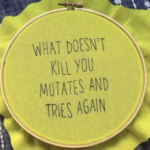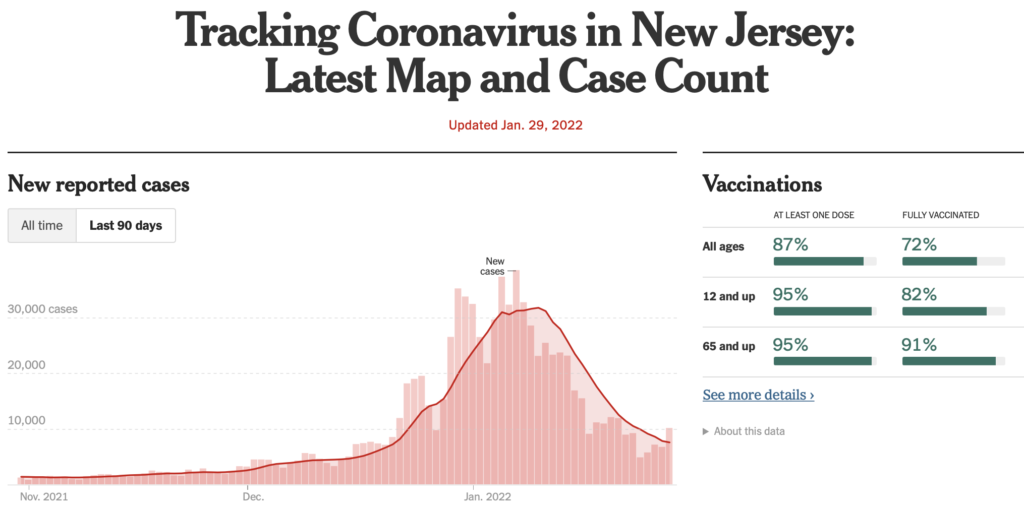Add it all up & it’s clear that this Spring — w/ a milder virus & nearly 100% population immunity — may be about as safe as it gets… perhaps for many years. Thus I see this Spring as a time when everyone (especially those who have been extra careful for two years) needs to figure out how to navigate a far less risky landscape. (Cue the usual caveat: a new variant could easily screw things up, yet again.)
The bottom line is this: in a few weeks — when this surge ends — things are going to be as good as they’re likely to get for the foreseeable future.
Aká je jeho hranica na “menšie opatrenia”?
What will my trigger be for switching to less cautious model? It’s a bit arbitrary – there’s no bright line separating “too risky” & “not risky.” This means that others may come up w/ different thresholds.
Mine will be case rates <10/100K/day (recognizing that reported cases now underestimate case #’s due to home testing). I’d also like to see test positivity rates of <1%. (The math: when we reach a 1% overall rate in SF, that would translate to a ~0.5% asymptomatic positivity rate; or 1/200 asymptomatic people having Covid. At that prevalence, in a room of 15 folks, there’s a 7% chance that at least 1 has Covid.)
A aké sú tie “menšie opatrenia”?
The main questions center on indoor spaces crowded with unmasked people of uncertain vaccination status. Small indoor groups, visiting friends & family, indoor dining: all fine, without masks.
If I had school-aged kids who were fully vaccinated, I’d be comfortable without masks in school, particularly if there were a school-wide vaccine requirement and good ventilation.
My practice will be to always carry a KN95, and to don it in very crowded, poorly ventilated spaces with lots of unmasked people, particularly in parts of the U.S. or world with low vax or high case rates. I can’t tell you how crowded or how poorly ventilated, any more than I can say how likely rain needs to be in forecast before I grab an umbrella. I’ll just trust my Spidey Sense: how long I’ll be in space, how awkward wearing a mask will be, whether folks are speaking, yelling, singing, or just standing around. Does it feel scary?
At least at first, I’ll still mask on public transit (trains, planes) & shopping — crowded public spaces w/ lots of unmasked people. Once masks are no longer mandated, I don’t think I’ll mask at the hospital unless I’m seeing a patient with respiratory symptoms.
 S covidom sa to časom presunie do podobnej roviny ako s chrípkou. Ak sme chorí, tak ostaneme doma, budeme odpočívať, nepôjdeme do práce a do školy nakaziť ostatných, aj bez toho aby boli povinné päť alebo koľkodňové karantény. A to aj bez toho, aby sme mali ochorenie potvrdené testom. Pokiaľ máme symptómy, tak ostať doma je rozumné správanie bez ohľadu na to, čo povie test, čiže informačná hodnota testu nie je veľmi veľká.
S covidom sa to časom presunie do podobnej roviny ako s chrípkou. Ak sme chorí, tak ostaneme doma, budeme odpočívať, nepôjdeme do práce a do školy nakaziť ostatných, aj bez toho aby boli povinné päť alebo koľkodňové karantény. A to aj bez toho, aby sme mali ochorenie potvrdené testom. Pokiaľ máme symptómy, tak ostať doma je rozumné správanie bez ohľadu na to, čo povie test, čiže informačná hodnota testu nie je veľmi veľká. 
